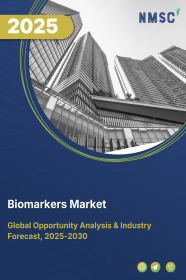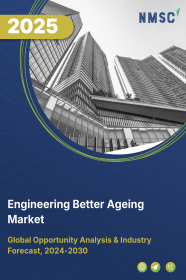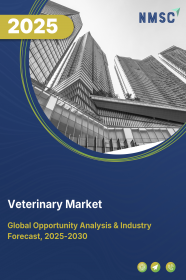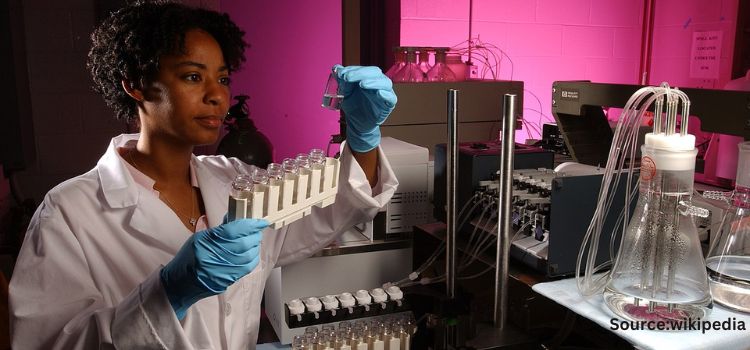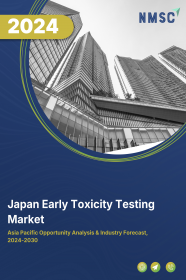
Japan Early Toxicity Testing Market by Technique (In Vivo, In Vitro, and In Silico), by Toxicity Endpoint (Genotoxicity, Dermal Toxicity, Skin Toxicity, Ocular Toxicity, Phototoxicity, and Others), by End User (Pharmaceutical Industry, Cosmetic Industry, Chemical Industry, Food Industry, and Others) – Opportunity Analysis and Industry Forecast, 2023-2030
Industry: Healthcare | Publish Date: 03-Dec-2024 | No of Pages: 94 | No. of Tables: 83 | No. of Figures: 32 | Format: PDF | Report Code : HC752
US Tariff Impact on Japan Early Toxicity Testing Market
Trump Tariffs Are Reshaping Global Business
Market Definition
Japan Early Toxicity Testing Market was valued at USD 354.14 million in 2022 and is predicted to reach USD 418.31 million by 2030, with a CAGR of 1.76% from 2023 to 2030.
Early toxicity testing is a crucial procedure that entails the assessment of potential harmful effects or toxicity associated with drugs, chemicals, or other substances during their initial developmental stages.
This evaluation is commonly conducted using in vitro studies (in controlled environments outside living organisms) or through animal models before progressing to human trials.
The primary objective of early toxicity testing is to detect any safety-related issues linked to a substance, determining its suitability for further development and testing.
By conducting these tests upfront, the potential risks to both humans and animals in subsequent clinical trials can be minimized, leading to cost and time savings in the drug development process.
The range of assessments encompasses various examinations, including cell viability assays, genotoxicity evaluations, and studies on how the substance is processed within the body (pharmacokinetics). The selection of specific tests and methodologies is contingent on the substance's nature and its intended application.
Overall, early toxicity testing stands as a pivotal stride in the drug development trajectory, ensuring the safety and effectiveness of emerging drugs and substances before attaining approval for human use.
Surging Pharmaceutical Industry in Japan Drives Urgency for Innovative Healthcare Solutions and Early Toxicity Testing
Growth in the pharmaceutical industry in Japan propels demand for innovative healthcare solutions, including early toxicity testing.
According to the International Trade Administration, Japan is the third-largest pharmaceutical market in the world and a critical export market for U.S. pharmaceuticals. Since 2013, the Government of Japan (“GOJ”) has promoted the healthcare industry as an important growth engine under the country’s economic revitalization and growth strategy.
Early toxicity testing is a critical component of the drug development process, allowing researchers to identify potential safety concerns and optimize dosing strategies before the drug is tested in humans. This can help accelerate the drug development process and improve the chances of success for new drugs and therapies.
The pharmaceutical industry in Japan is highly competitive, with many companies competing to bring new drugs to market as a result, there is a growth in demand for early toxicity testing services in Japan.
Escalating Demand for Early Toxicity Testing Services Surges in Japan Due to Expansive and Aging Population
The growing gigantic population in Japan is driving the demand for the early toxicity testing market. Japan has one of the largest and fastest-aging populations in the world, with a high prevalence of chronic diseases such as cancer and cardiovascular diseases.
As a result, there is a growth in the need for new drugs and therapies to treat these diseases.
According to the Statistics Bureau of Japan, aged population 65 years old and over was 36.21 million, constituting 28.9% of the total population, which is 1 in every 4 persons and marking a record high in 2021.
Impact of Regulatory Constraints on the Expansion of the Early Toxicity Testing Market in Japan
However, strict guidelines established by regulatory agencies like the US FDA and the EMA necessitate extensive and exacting testing for medication development and safety, which can be costly and time-consuming and impede market expansion. Small and medium-sized businesses that may lack the means to conduct thorough testing may find it difficult and expensive to comply with these rules.
Because of this, some businesses might decide to postpone or scrap drug development initiatives, which could reduce the market for early toxicity testing services.
Furthermore, strict rules may lead to a protracted approval procedure for new pharmaceuticals, which would add to the delay in the time it takes for drugs to reach the market. This, in turn, is expected to hamper the growth of the ETT market.
Technological Advancements in the field of Early Toxicity Testing Market in Japan
Introduction of new technologies such as in-vitro modelling using 3D cell culture is expected to provide new lucrative opportunities for the early toxicity testing market during the forecast period.
The use of 3D cell cultures can better mimic the complexity of tissues and organs, providing more accurate and reliable results for toxicity testing. Traditional 2D cell culture models are limited in their ability to mimic the complexity of human tissues and organs, often leading to inaccurate and unreliable results in toxicity testing.
However, the use of 3D cell culture models can better mimic the structural and functional complexity of tissues and organs, providing more accurate and reliable results for toxicity testing.
3D cell cultures allow growth and interaction of multiple cell types, creating a microenvironment that more closely resembles human tissues and organs. This can better predict the toxic effects of drugs and chemicals in the human body, reducing the risk of adverse effects in clinical trials. Hence, such factors propel the market growth.
Competitive Landscape
The Japan early toxicity testing industry includes several market players such as Inotiv Inc., Bio-Rad Laboratories Inc., Evotec A.G., Agilent Technologies Inc, Wuxi Apptec, Bruker, Perkinelmer Inc., Enzo Biochem Inc., Danaher Corporation, Eurofins Scientific SE, Charles River Laboratories International, Inc., Labcorp Drug Development., Promega Corporation, Insphero AG. and Thermo Fisher Scientific Inc.
Key Benefits
-
The Japan early toxicity testing market report provides a quantitative analysis of the current market and estimations through 2023-2030 that assists in identifying the prevailing market opportunities to capitalize on.
-
The study comprises a deep dive analysis of the market trend including the current and future trends for depicting the prevalent investment pockets in the industry.
-
The information related to key drivers, restraints, and opportunities and their impact on the market is provided in the report.
-
The competitive analysis of the key players along with their market share in the Japan early toxicity testing market.
-
The SWOT analysis and Porter’s Five Forces model are elaborated in the study.
-
Value chain analysis in the market study provides a clear picture of the stakeholders’ roles.
Japan Early Toxicity Testing Market Key Segments
By Technique
-
In Vivo
-
In Vitro
-
Cell Culture
-
PCR
-
ELISA
-
Western Blotting
-
Protein Binding Assays
-
-
In Silico
By Toxicity Endpoint
-
Genotoxicity
-
Dermal Toxicity
-
Skin Toxicity
-
Ocular Toxicity
-
Phototoxicity
-
Others
By End User
-
Pharmaceutical Industry
-
Cosmetic Industry
-
Chemical Industry
-
Food Industry
-
Others
Key Players
-
Inotiv Inc.
-
Bio-Rad Laboratories Inc
-
Evotec A.G.
-
Agilent Technologies Inc
-
Wuxi Apptec
-
Bruker
-
Perkinelmer Inc.
-
Enzo Biochem Inc.
-
Danaher Corporation
-
Eurofins Scientific SE
-
Charles River Laboratories International, Inc.
-
Labcorp Drug Development.
-
Promega Corporation
-
Insphero AG
-
Thermo Fisher Scientific Inc.
REPORT SCOPE AND SEGMENTATION:
|
Parameters |
Details |
|
Market Size in 2022 |
USD 354.14 Million |
|
Revenue Forecast in 2030 |
USD 418.31 Million |
|
Growth Rate |
CAGR of 1.76% from 2023 to 2030 |
|
Analysis Period |
2022–2030 |
|
Base Year Considered |
2022 |
|
Forecast Period |
2023–2030 |
|
Market Size Estimation |
Million (USD) |
|
Growth Factors |
The growth in the pharmaceutical industry. The rising gigantic population. |
|
Companies Profiled |
15 |
|
Market Share |
Available for 15 companies |
|
Customization Scope |
Free customization (equivalent up to 80 working hours of analysts) after purchase. Addition or alteration to country, regional, and segment scope. |
|
Pricing and Purchase Options |
Avail customized purchase options to meet your exact research needs. |

















 Speak to Our Analyst
Speak to Our Analyst



